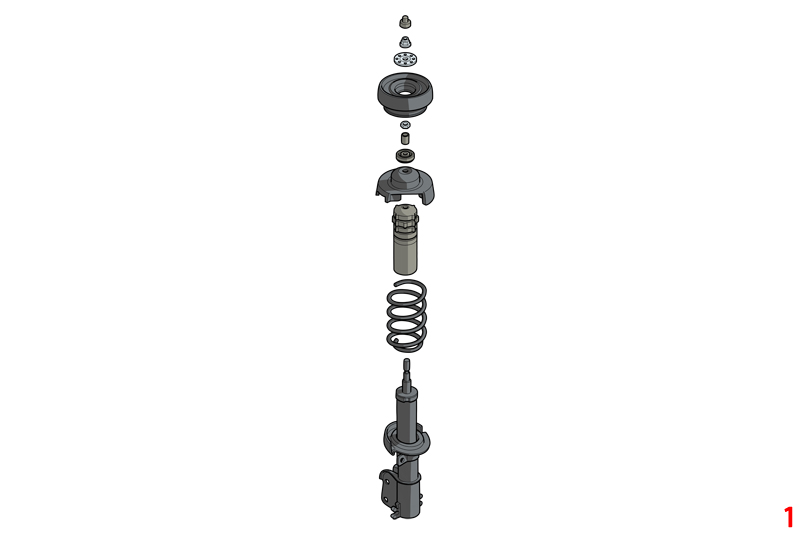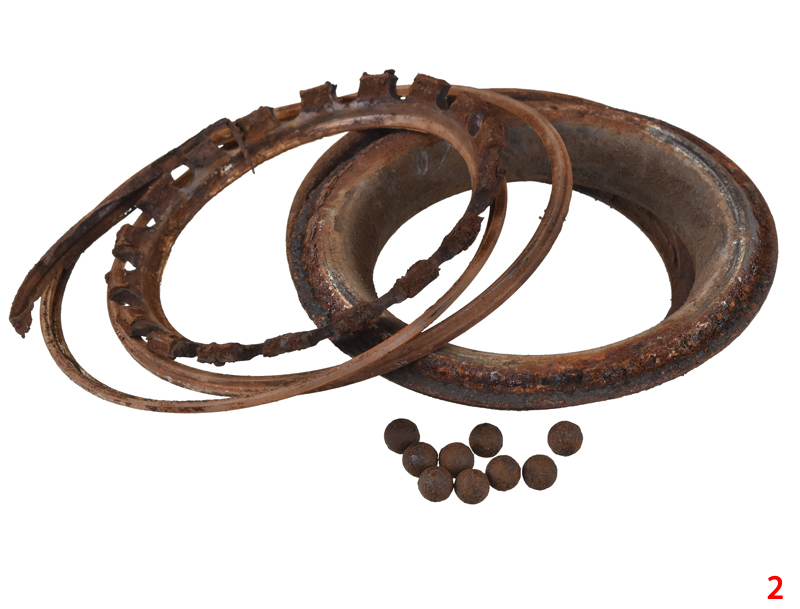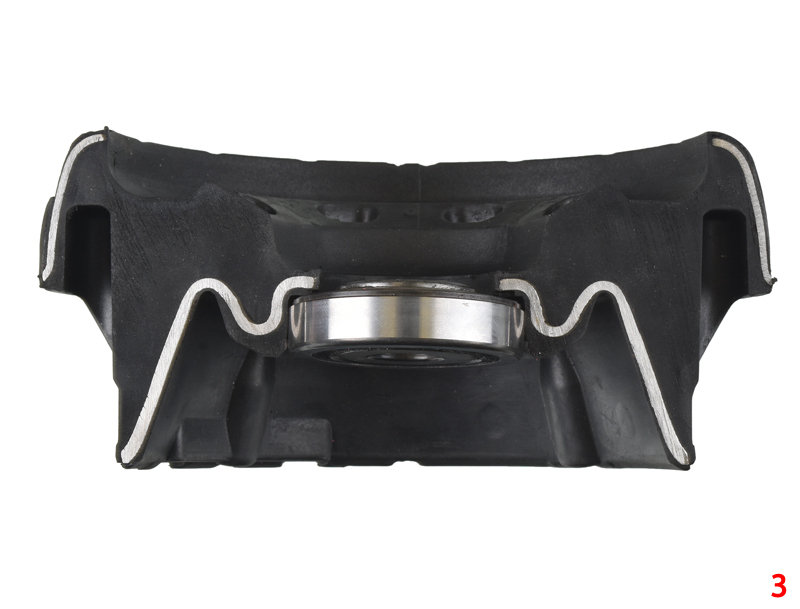
It’s important to know how vehicle components are made and what exactly each feature is designed to achieve. This month, we take a look at Strut Top Mountings from febi.
The Macpherson strut is made up of a number of components,which forms a compact suspension unit. This is a very popular choice, for vehicle manufacturers, due to its simplicity and low manufacturing cost.
The main parts of this suspension unit include a long telescopic tube, which incorporates a damper. This is usually fitted with a piston protector to keep out road grit and protect the seals.
A coil spring is located between two retaining cups, held in place under compression by the retaining nut, which is secured to the top of the damper piston.
The unit is rigidly connected to the stub axle or hub assembly and is pivoted at the top, usually by a top bearing, to accommodate steering movement. The bearing forms part of the strut top mounting assembly, which acts as an insulator as well as a fixing point, between the suspension unit and the vehicle’s body. (Fig.1/main image)
Functionality
The suspension strut top mounting is a bonded rubber bush, which is mounted to the top of the damper and fixed to the vehicle’s chassis. This is an integral part of the suspension strut assembly. Strut mountings can also incorporate a bearing or a bearing plate that allows the strut to turn with the steered wheels.
The strut mounting acts as a coupling to the spring and shock absorber, connecting it to the body. The damping force is absorbed separately within the mounting, which in turn insulates the vehicle’s body from suspension and road noise. In the lateral direction, the mounting is designed to be stiffer. This positively influences the driving dynamics, and the steering response, which greatly reduces noise, vibration and harshness from the driveline and suspension. This ensures maximum driver and passenger comfort.
To do this, the strut top mounting has to ensure low-friction and distortion-free movement of the shock absorber spring during steering and deflection. This enables the road spring to operate without self-aligning torque. The strut mounting also has to locate the shock-absorber spring and form a support surface for full deflection of the shock absorber.
All this has to be achieved in a compact design that has been optimised for limited mounting space and supplied as a sealed unit. It also needs to be maintenance free.
Strut Top Replacement
During the life of this suspension unit, the damper and spring have to expand and contract millions of times, enduring the stress of all the road surfaces that the vehicle is driven on. This includes damaged road surfaces, which bring extra stress to the unit.
The strut top mounting bearing often falls apart or seizes, resulting in a creaking or grinding noise from the suspension. This can lead to the bearing tearing the rubber apart in the mounting, as shown in Fig.2.

The rubber itself can deteriorate with age, leading to reduced driving comfort due to noise development. This results in tight steering or excess play in the steering, unstable handling and reduced driving and braking safety.
OE grade
The strength of a strut top mounting comes from the properties of the elastomeric material used and metal reinforcement within it. This provides the flexibility and stiffness that is required. The picture in Fig.3 shows a sectioned view of febi part 22639, with the bearing.

febi strut top mountings are made from OE grade rubber and follow the precise specifications of the vehicle manufacturer, ensuring optimum performance. When replacing this part rely on tested OE matching quality spare parts from febi.









